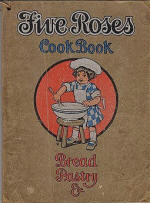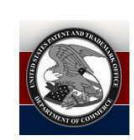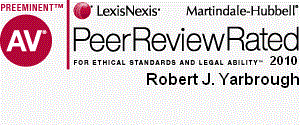Newsletter Issue 80 - October 2015
In this issue:
How to win litigation
Protecting recipes
Efficient patent infringement
Ask Dr. Copyright ...
Dear Doc:
I know that you have a "juris doctor" degree (hence, the "Dr." in
your title) that you got by spending three long, hard years in law
school. For those of us who don't have the time, money, or frankly,
any interest in going to law school, can you tell us what you
learned to save us the effort?"
Signed,
Lay Z. Client
Dear Lay:
Of course! The Doc is always ready to deprive your local law school
of another $150K in tuition, and besides, the Doc thinks that we
already have WAY TOO MANY LAWYERS in this country. So here
goes...three years of law school in three sentences (with a lawyerly
explanation for each):
1. The person with the better written records wins.
- Seriously, if you show up with contracts, notes, specifications,
video tapes, and blue prints, and the other guy says, "But Fred told
me that a size 14 prawn shackle would be perfectly adequate to hold
the weight of the transverse garbanzo beam." Who do you think that
the judge and jury are going to believe? Keep good records, and you
can avoid most disputes ever turning into law suits.
2. The person who should win at trial almost always does.
- Judges and juries have a sixth sense about these things. At most
trials, while studies confirm that the thing to which jurors pay the
most attention is the lawyers' neckties, the outcome usually is
correct and just. The Doc has great faith in the system. Once things
get to appeal, however, all bets should be on the side with lots of
money and lawyers. There is no more jury, and the rules get super
complicated. As a dean of Villanova Law School once said to his
students in the 1970s, "This is law school. If you are looking for
justice, the chapel is down the street."
3. If the law suit is worth enough money, there is no paper too
petty to file, or issue too inconsequential to be argued.
- The legal process is pretty good at sorting out disputes where the
amount to be won or lost is of the same general order of magnitude
as the lawyer's fees for the case. Increase the "at stake" value to
a very large number, and the entire system breaks down because there
is no longer any question about the value of paying the lawyers more
money to generate more paper and more delay. They're not supposed to
do that, but in the real world, even the court rules get distorted
by dollar signs followed by too many zeros.
So there you have it! The Doc just saved you $150K and three years
of your life. Of course, if you are in business today, it is just
about a sure thing that you will get involved in a legal dispute at
some time. There are alternatives to litigation, such as mediation
and arbitration. Even a proper apology sometimes works wonders. When
you find yourself in a dispute, give the attorneys at LW&H a call -
they do all sorts of dispute resolution - and remember to tell them
that you have great written records!
Until next month...
The Doc.
Protecting Recipes -- A Cooking Lesson in Futility

Protecting recipes with the traditional tools of intellectual
property is difficult. That's why so
many valuable recipes are
maintained by their owners as trade secrets. Thomas English Muffins,
Coca-Cola, KFC Fried Chicken, Chartreuse, and Mrs. Fields Chocolate
Chip Cookies are a few well-known examples. But that does not deter
some people from pushing the envelope of intellectual property
protection.
Take for example, Ms. Carroll Moore who recently sued her former
business partner for stealing (i.e., infringing) recipes from her
published recipe book, which she had registered with the U.S.
Copyright Office. Against arguments that her recipes could not be
copyrighted, she maintained that her "recipe book" possessed
sufficient creativity to merit copyright protection. The trial
court disagreed and granted the defendants summary judgment without
even reaching that question. Instead, it found that her recipe book
and the purported infringing recipes were not sufficiently similar
to be infringing.
Apparently, this left a bad taste in Ms. Moore's mouth so
she
appealed the trial court's decision to the U.S. Circuit Court of
Appeals for the Sixth Circuit where she fared no better. But this
time the court -- relying on well understood legal precedents
-- reached the question of whether her recipes were protectable
under U. S. copyright law. The principle question considered by the
court was whether a recipe book meets the constitutional
requirements that copyrightable works be "original" and possess "at
least a minimal degree of creativity." Remember, under the law, a
list of ingredients is merely a factual statement and that the
instructions contained in a recipe are merely functional directions,
which do not deserve copyright protection.
Although the court recognized that a compilation of recipes could
conceivably possess enough originality to deserve copyright
protection, it couldn't find any in Ms. Moore's recipe book. The
court wrote that merely characterizing "how recipes are developed
and further perfected," as did Moore, "does not identify a creative
element of the recipes." According to the court, the "unoriginal"
elements of a compilation do not deserve copyright protection. So,
to prove that her compilation of recipes is copyrightable, Ms. Moore
would have to demonstrate that her recipe book contained creative
elements, a task that she failed to do.
If a recipe book is not original, the defendants could not have
infringed it. And that's it!
What's So "Efficient" About Patent Infringement?

In a recent editorial in the New York Times, Joe Nocera discussed
"patent trolls" and the concept of efficient infringement of patent
rights. Briefly, this idea is that large companies just ignore
patents completely, taking a "so sue me" attitude, knowing that they
have legions of lawyers who can wear down patent owners, and that
even if the final ruling goes against them, the damages that they
will be ordered to pay are lower than the cost of honestly
negotiating the right to use others' inventions in the first place.
In a capitalist system, this behavior makes perfect sense, and
patents are not the only area of business where we see the adage,
"It's easier to get forgiveness than permission" played out.
How has this "efficient" system been allowed to take root? It stems
from a landmark 2006 ruling of the Supreme Court,
"Ebay v.
Merchexchange". (547 U.S. 388) Prior to that ruling, courts
routinely granted patent owners injunctions once infringement was
proved. That is, because the U.S. Constitution says that patent
owners get "exclusive rights" to their inventions for a limited
period of time, they have the right to exclude others from using the
invention without permission (and that permission is known as a
license.) The law allowed for these injunctions for over 100 years.
Then, in the Ebay case, the Supreme Court said that if the
injunction would harm the company that was infringing, its
employees, customers, or others more than not granting it would harm
the inventor, then no injunction should issue. Companies that were
using patented inventions then replied, "If you keep us from
continuing to use this invention, we will have to fire many
employees." (The patent equivalent of the kid who kills his parents
and then begs for mercy because he is an orphan!)
With no real threat of patent owners shutting down infringing
products with an injunction, executives made the "correct" decision
- and they now just steal many patented inventions, inviting
inventors to sue. When inventors sue, the companies call them
"patent trolls" and drag the cases out, sometimes for more than a
decade. This behavior is great for large companies and their
shareholders. Not so much for small companies and inventors. For
such small patent owners, the light at the end of the tunnel is just
the onrushing locomotive, coming to crush their patent rights.

